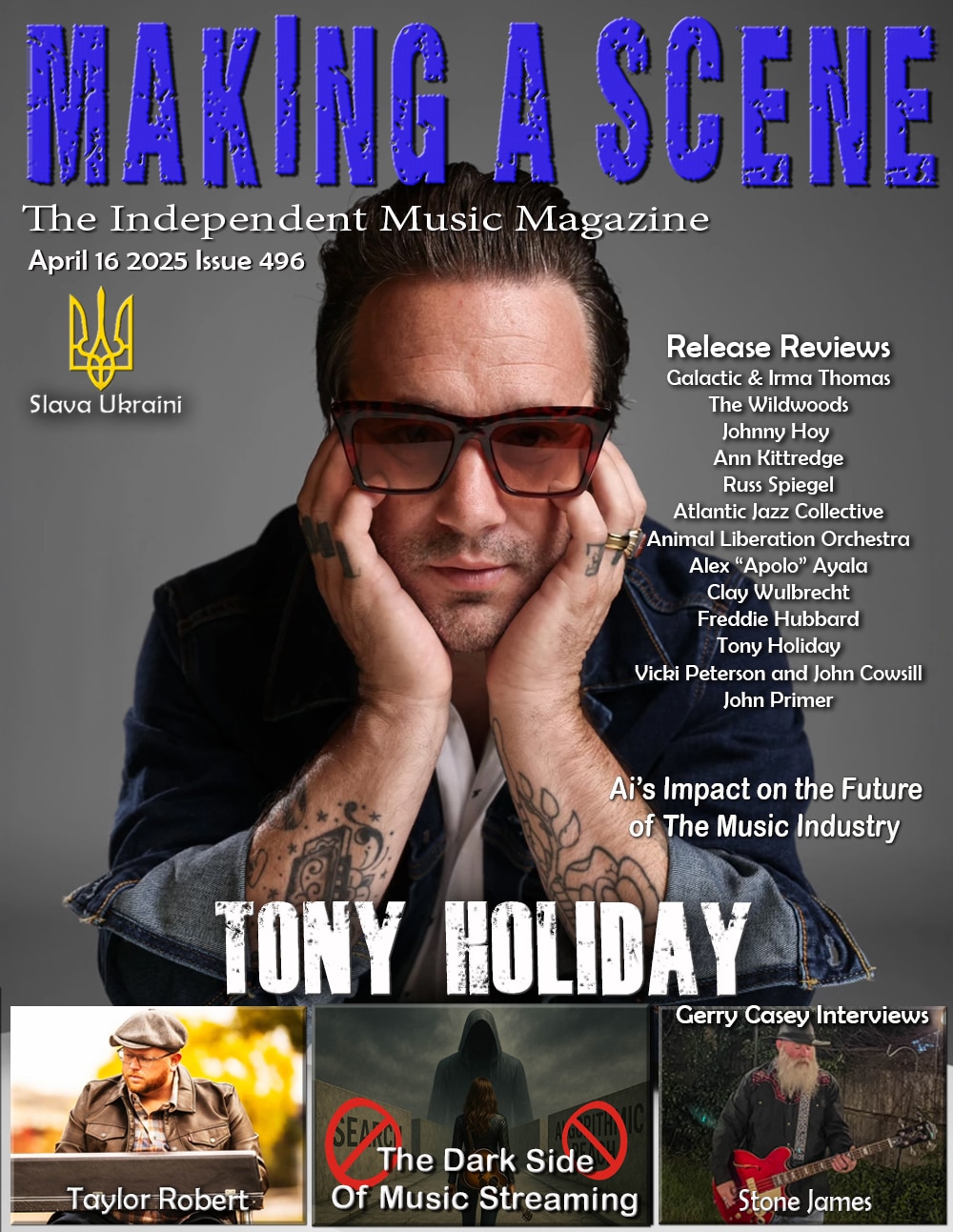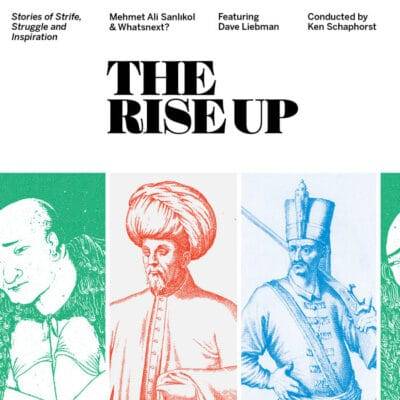Mehmet Ali Sanlikol The Rise Up: Stories of Strife, Struggle and Inspiration
Mehmet Ali Sanlikol
The Rise Up: Stories of Strife, Struggle and Inspiration
Dunya
Prolific composer and multi-instrumentalist Mehmet Ali Sanlikol delivers his ambitious project: THE RISE UP: Stories of Strife, Struggle and Inspiration with his dynamic jazz orchestra Whatsnext, written for and featuring NEA Jazz Master Dave Liebman as soloist, The Rise Up is an epic three-part artistic masterpiece that combines traditional Middle Eastern instrumentation and classical Turkish music with the jazz language in a cosmopolitan and internalized fashion. Now, we’ll simplify that statement for you. Go in an easterly direction along the Mediterranean from Spain, think large orchestra and what you have is a modern day, newly placed version of the Miles Davis/Gil Evans classic, Sketches of Spain with Dave Liebman on soprano the main soloist instead of Davis. Surely, the music is different given the countries featured but Sanlikol admittedly took many of his cues from that famous work, also long a favorite of Liebman’s.
The seeds for The Rise Up were planted in 2017, when Dave Liebman asked Sanlıkol to compose an extended programmatic piece for jazz orchestra featuring himself as soloist. Particularly, Liebman requested that the piece draw from Turkish and Sephardic Jewish musical elements as well as cultural and historical resources. Saddened and personally affected by the current political climate and offensive stereotyping of Muslims in the U.S., Sanlıkol chose to construct around three episodes from Middle Eastern history that chronicle traumatic events followed by transcendental creation and/or human inspiration. This uplifting message speaks to Sanlıkol’s belief that humanity will rise up above these difficult times, a timely message for the pandemic and racial unrest we face here now as well.
The first narrative centers around the great 13th century Sufi poet Mevlana Celaleddin-i Rumi, composer of some of the most beautiful mystical poetry ever written after the murder of Shams (lit. “sun” in Arabic), his beloved teacher and friend. The second story comes from the traditions of the Sephardim, Jews expelled from Spain but welcomed by the Ottomans, leading to a cultural flowering treasured to this day. The third narrative tells the story of Mimar Sinan, forcibly taken by the Ottomans as a young Orthodox Christian boy, who came to embrace his new Muslim identity and rose to great heights in mid-16th century as the master architect of some of the greatest mosques in the world.
In terms of instrumentation, modeling on Sketches of Spain, Sanlikol takes the standard big band with saxophones, trumpets, trombones and rhythm section and expands it with additional winds and brass including oboe, English horn, flute, clarinets, bass clarinet, French horn and tuba. This expanded instrumentation is then supplemented by a variety of Middle Eastern instruments and percussion such as the ney (end-blown flute), zurna (double reed pipe), ud (short-necked lute), darbuka (goblet-shaped drum), tef (small frame drum with cymbals), nekkare (small kettledrums), and kös (large kettledrums) as well as orchestral percussion and voices both solo and tutti with a small group of singers performing in the Greek Orthodox (Byzantine) style. It will get way too tedious to list all the personnel but consider a credit list that includes 28 including conductor Ken Schaphorst. Sanlikol is credited for voice, ney, zurna and ud. Each movement is comprised of three pieces, resulting in nine non-stop sections individually represented by specially chosen historical images (as seen in the accompanying booklet which boasts detailed historical content on each of the pieces as well.
While most of the composition uses the jazz language with strong influences of classical Turkish music, the second movement breaks to incorporate the solea (coincidentally the name of a track on Sketches of Spain) pattern found in Flamenco music. And, while there are several moments which display uses of microtonal flavors, the most significant example of such a passage would be the extended unison where the zurna is doubled with trumpets in “A Confrontation in Anatolia” during which American trumpeters use alternate fingerings in combination with extended tubings devised to be able to perform the precise microtones of the Turkish makam (mode) tradition. While The Rise Up pulls from myriad musical styles throughout, Sanlıkol manages to preserve the integrity of each tradition. “As a musician who is devoted to a type of multiculturalism that is not touristic but truly internalized, I was particularly careful to incorporate the Turkish makam, usul (rhythmic cycles), microtones, and inflections without exoticizing them,” he said.
The result is a truly adventurous and perhaps career defining recording that manages to bring people, history and worlds together. As Producer Kabir Sehgal states in the liner notes, The Rise Up puts us on a path towards a more inviting and humane future. More praise comes from five-time Grammy winner, drummer and composer Antonio Sanchez, who offers, “It’s hard to find unique music nowadays. It’s even harder to find unique large-ensemble music. Mehmet and his band are, in my opinion, one of the most interesting musical associations on the scene. They easily navigate between the jazz, Turkish and Middle Eastern worlds effortlessly. The Rise Up, being commissioned by special guest Dave Liebman, is a huge compositional and conceptual accomplishment where storytelling is paramount and the performance is immaculate. Movements of the piece blend seamlessly and paint a big picture that is ambitious but crystal clear in its execution. Dave Liebman shines through it and so does the whole ensemble. Just sit back and enjoy the ride.” Call it world music, call it jazz, call it whatever. There is nothing to compare it to other than the one comparison made herein, Yet, this is unlike anything else. You can tell folks that you learned about a unique piece of music today, something not many others can say.
- Jim Hynes
Discover more from Making A Scene!
Subscribe to get the latest posts sent to your email.















































REVIEW: Mehmet Ali Sanlikol The Rise Up: Stories of Strife, Struggle and Inspiration - Making A Scene! - LYDIALIEBMAN.COM
August 19, 2020 @ 1:53 pm
[…] By Jim Hynes, Making A Scene! […]